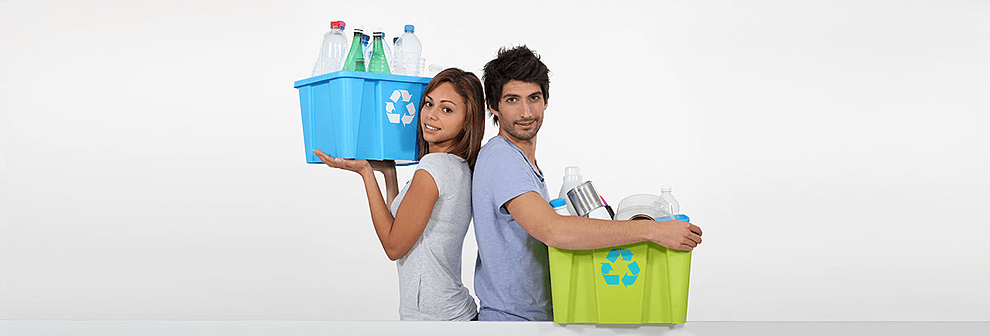Bamboo: Greener Choice Over Plastic
Posted on 25/10/2024
In recent years, as environmental concerns have become increasingly pressing, society has turned its focus toward sustainable living and eco-friendly materials. One such material that has garnered significant attention is bamboo. Often touted as a greener choice over plastic, bamboo offers numerous environmental, economic, and social benefits. This article delves into the various aspects of bamboo, exploring why it emerges as a more sustainable option compared to plastic.
Bamboo: A Sustainable Resource
Bamboo is celebrated for its rapid growth rate, with some species capable of growing up to three feet per day. Unlike traditional hardwood trees, which can take decades to mature, bamboo can be harvested in as little as three to five years. This swift growth rate ensures a sustainable supply, reducing the pressure on forest ecosystems traditionally harvested for wood. Additionally, bamboo regenerates naturally; it does not require replanting after harvest because it grows from an extensive root system.

Environmental Benefits of Bamboo
1. Carbon Sequestration
Bamboo plays a vital role in carbon sequestration. It has a high capacity to absorb carbon dioxide from the atmosphere, which helps mitigate climate change. Studies indicate that one hectare of bamboo can absorb up to 62 tons of carbon dioxide per year, far exceeding the absorption rate of equivalent areas of hardwood forests.
2. Soil and Water Conservation
Bamboo's extensive root system is beneficial for soil conservation. It helps in preventing soil erosion, maintaining soil structure, and enhancing water retention. This makes bamboo particularly useful in areas prone to degradation. Additionally, bamboo agriculture requires significantly less water compared to other crops, making it an ideal choice in water-scarce regions.
3. Biodiversity
Cultivating bamboo can promote biodiversity. Bamboo forests provide habitats for a variety of species, including endangered animals like the giant panda. They also support numerous understory plants, insects, and birds, contributing to a healthier and more diverse ecosystem.
The Economic Advantages of Bamboo
1. Rural Development
Bamboo cultivation can provide numerous economic opportunities in rural areas, especially in developing countries. It creates jobs in farming, processing, and manufacturing industries. This can help alleviate poverty and lead to the economic upliftment of rural communities.
2. Versatility in Products
One of the standout features of bamboo is its versatility. It can be transformed into a wide range of products, including furniture, flooring, paper, textiles, and even biodegradable utensils. This versatility fuels various industries and creates a broad spectrum of employment opportunities at multiple stages of the production process.
3. Export Potential
Given its growing global popularity, bamboo products have substantial export potential. Countries with abundant bamboo resources, such as China, India, and several Southeast Asian nations, can capitalize on this demand to boost their economies.
Comparing Bamboo to Plastic
1. Decomposition and Biodegradability
One of the most significant environmental impacts of plastic is its longevity. Plastics can take hundreds to even thousands of years to decompose, during which time they break down into microplastics that pollute soil and water bodies. In contrast, bamboo products are biodegradable and can decompose within months to a few years, depending on environmental conditions.
2. Toxicity and Health Concerns
The production and disposal of plastics release numerous toxic substances into the environment, including harmful chemicals that can enter the food chain and affect both wildlife and humans. Bamboo, however, is generally non-toxic and does not require harmful chemicals in its processing, making it a healthier alternative for household items, especially kitchenware and personal care products.
3. Energy Consumption
Plastic production is energy-intensive and relies heavily on fossil fuels. The extraction and processing of petroleum feedstocks, coupled with the manufacturing process, result in significant greenhouse gas emissions. Bamboo manufacturing, on the other hand, typically consumes less energy and can be processed using more sustainable methods, further minimizing its environmental footprint.

Challenges and Considerations
Despite the numerous benefits, the widespread adoption of bamboo is not without its challenges. These include:
1. Processing Infrastructure
The processing of bamboo into commercially viable products requires suitable infrastructure, which might be lacking in many regions. Investment in processing facilities and technologies is necessary to fully realize the potential of bamboo.
2. Market Perception and Awareness
Consumers need to be made aware of the benefits and applications of bamboo products. Changing market perceptions and building consumer trust in bamboo products requires consistent efforts in marketing and educational campaigns.
3. Regulatory Standards
Establishing and adhering to regulatory standards is crucial to ensure the quality and sustainability of bamboo products. This may involve certification schemes and quality control measures to gain consumer confidence and compliance in international markets.
Conclusion
Bamboo presents a compelling case as a greener alternative to plastic. Its rapid growth, carbon sequestration capabilities, and biodegradability are just a few reasons this remarkable plant is being hailed as a sustainable solution to some of our most pressing environmental challenges. Furthermore, bamboo holds significant economic potential, particularly for rural communities, by creating jobs and fostering economic development.
However, to fully take advantage of bamboo's benefits, it is essential to address the challenges associated with its processing and market perception. Concerted efforts from governments, industries, and consumers alike are crucial to making bamboo a mainstream material choice. As we continue to seek sustainable alternatives to environmentally damaging materials, bamboo stands out as a beacon of hope, promising a greener and more sustainable future.




